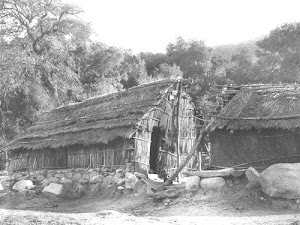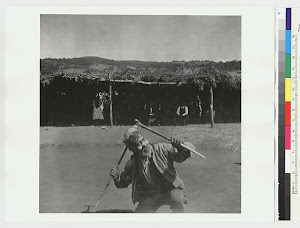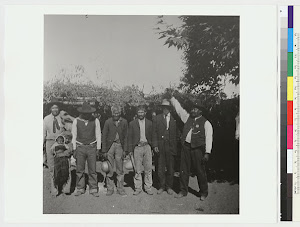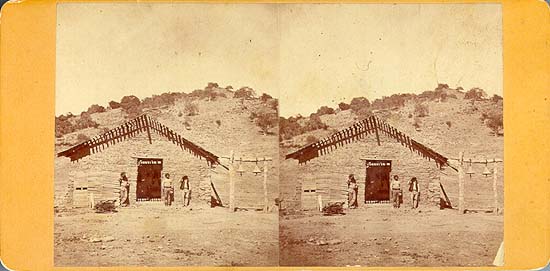For Immediate Release
Contact:
Kenneth Shoji
Office of Public Affairs
San Manuel Band of Mission Indians
Ph: 909-864-8933
Kshoji@sanmanuel-nsn.gov
KVCR-TV AND SAN MANUEL TO DEBUT DOCUMENTARY ON CALIFORNIA NATIVE AMERICAN HISTORY OF RESISTANCE AND SURVIVAL
Four Part Television Series to Take Viewers through Stories of Struggle and Perseverance as Told by California Indians and Noted Historians
San Bernardino Calif. and San Manuel Reservation (Highland, Calif.) March 24, 2010 – KVCR-TV in partnership with the San Manuel Band of Mission Indians has produced a new four-part documentary series on the history of near extinction that was faced by California Tribal communities following contact with European and American powers. The series will air on KVCR over four consecutive Mondays starting April 5th at 8:00 p.m. Entitled “The People of the Pines, The California Native” the programs are a third installment of documentaries that have expanded from profiling the San Manuel Band of Mission Indians into a broader account of the history shared by the state’s indigenous peoples and communities.
KVCR-TV’s broadcast range extends thought the eastern portion of Los Angeles to Riverside and San Bernardino Counties. Viewers are invited to watch previews for the series and individual episodes by visiting www.peopleofthepines.org
This series which began nearly two years ago is the product of in-depth research, interviews and reenactments providing California Native Americans an opportunity to bring to light those actions and policies that resulted in the decimation of a Native world that has existed since time immemorial.
“It is my wish that viewers will come to understand the factual accounts of what our ancestors went through in history, so that we can be here today to call ourselves the California Indian People and start to move forward in the broader community with mutual understanding and respect for one another, ”said San Manuel Chairman James Ramos.
The series covers a period of time spanning the internment of natives into the Spanish Mission System to the mid 20th Century when native veterans of World War II returned home to find their tribes terminated through a single action of congress.
In order to get these accounts KVCR crew traveled the state of California and beyond to speak to Native Americans who recount the shared history of their communities. This including the Modoc Tribe which was split between Oregon and Oklahoma following a protracted war that resulted in the death of a United States general and a forced removal of half the tribe to what was then Indian Territory (Oklahoma).
Historians and Native Americans cover the chronology of this history as painted upon the backdrop of American and world history. Discussions focus on various manners in which California Indians fought to maintain and remain within their ancestral lands and preserve their ways of life. Broken treaties, major military campaigns, and the heroic actions of native leaders such as Santos Manuel, leader of the San Manuel Band of Mission Indians, are recounted by their descendents who candidly share the tragedies and triumphs that are part of the shared identity of over 100 tribal communities located in all corners of California.
About the San Manuel Band of Mission Indians
The San Manuel Band of Serrano Mission Indians is a federally recognized American Indian tribe located near the city of Highland, Calif. The Serrano Indians are the indigenous people of the San Bernardino highlands, passes, valleys and mountains who share a common language and culture. The San Manuel reservation was established in 1891 and recognized as a sovereign nation with the right of self-government. Since time immemorial, the San Manuel tribal community has endured change and hardship. Amidst these challenges the tribe continued to maintain its unique form of governance. Like other governments it seeks to provide a better quality of life for its citizens by building infrastructure, maintaining civil services and promoting social, economic and cultural development. Today San Manuel tribal government oversees many governmental units including the departments of fire, public safety, education and environment.
Thursday, March 25, 2010
DOCUMENTARY ON CALIFORNIA NATIVE AMERICAN HISTORY
Posted by
Karen Vigneault Librarian
at
10:34 AM
0
comments
![]()
Monday, March 22, 2010
3 arrested for disturbing indian burial site
Watch the video at
http://abclocal.go.com/kabc/story?section=news/local/ventura_county&id=7340947
CAMARILLO, Calif. (KABC) -- Some of those arrowheads and artifacts you may come across could get you in trouble. In Ventura County, three men were arrested for disturbing an American-Indian burial site.
Beyond the wildflowers of the Santa Monica Mountains, there are treasures in the hills. The most cherished possessions of the Chumash Indians. Ventura County sheriff's deputies seized several items that were taken by suspected looters.
"Before they had the bow and arrows they actually made spears," said Deputy Julie Novak, Ventura County Sheriff's Dept.
Deputies displayed relics found with three Newbury Park men, Noah Erickson, John Watson and Fredrick Villela. A tip led deputies to private property in the coastal range where they say they found the men scavenging.
"They were very cooperative. They said they were collecting some things yet in the dark with flashlights," said Novak. "For them it was a hobby. They had been collecting and it had been in their family for generations."
There are legal ways to pursue archaeology as a hobby. This is not one of them. Scientific information is lost when objects are moved, said archeologists.
"It could be an object found we can't date," explained Professor Colleen Delaney-Rivera, Cal State Channel Islands.
The arrowheads were used to hunt elk, deer and marine mammals and are 1000 to 2000 years old. The beads show the Chumash travelled and traded with populations on Catalina and beyond.
"By finding out where artifacts come from we can see the population," said Rivera. "We are now finding Southern California beads in Colorado and the U.S. southwest."
The case has been turned over to the DA's office. The offenses are both misdemeanors and felonies. If convicted the suspects could serve time in prison. The incident is a warning to any hiker. Finding several items in one spot is a likely burial site, sacred to the Chumash and illegal to disturb.
"Enjoy it where you can see it but don't take it with you," said Rivera.
Posted by
Karen Vigneault Librarian
at
11:40 AM
0
comments
![]()
Wednesday, March 17, 2010
CAT IN THE BASKET HAT READING FOR DR SEUSS BIRTHDAY AT WARNER SCHOOL


Howka tribal members, I truly enjoyed reading to the kids as Cat in the Basket Hat for Dr. Seuss's Birthday. The kids at Warner were fantastic. Here are some pics of some of the kids as they rotated from reader to reader.I am planning on doing something for our kids for National Library Week. I also plan on having a book party at our traditional gathering in August.
Posted by
Karen Vigneault Librarian
at
1:57 PM
0
comments
![]()
Tuesday, March 16, 2010
MASTER APPRENTICE TRAINING IN KUGLUKTUK





MASTER APPRENTICE TRAINING IN KUGLUKTUK
February, 2010
L. Frank and Leanne Hinton spent the last week of February far north of the Arctic Circle, in the hamlet of Kugluktuk, in the province of Nunavut, Canada. Temperatures were as low as -54°F, a great adventure for coastal California gals. (Even the locals thought that was pretty cold.) The village is on the Coronation Inlet of the Arctic Ocean, all frozen solid until the ice breakup comes in mid-June. This time of year, “ice-roads” are built on the lakes, and people cross over the inlet to islands on their snowmobiles, unlike the summer when they turn to their boats for these crossings. The “Tree Line,” some forty miles south of Kugluktuk is the magical place where trees start to grow. The plants of summer around Kugluktuk are lush, but tiny, hugging the ground. This time of year, of course, there is only the vast expanses of white snow.
Millie Kuliktana and her co-worker Susie had brought us up there to give a Master-Apprentice training workshop. 3 years ago they had gone to a Master-Apprentice workshop Leanne gave in Victoria, and it went to their hearts. “It was about me and my grandmother!” Millie said. They felt this was the exact thing they needed for language revitalization in Kugluktuk, where the language is rarely heard nowadays. Despite the fact that there are still some grandmothers unilingual in Inuinnaqtun, Millie can’t think of a single household that uses the language any more other than the elders’ homes, and young adults have grown up speaking only English. They’ve been working for the last 3 years to get their community ready for a Master-Apprentice program. “Language revitalization” wasn’t a word anyone was thinking about in Nunavut before now, they told us. The speakers, too, are ready. They completely understand the process, and are delighted to be part of it.
Attending the workshop were the master-apprentice teams themselves, and a group of “Foundation” students – students at the beginning of a training program for teachers. Normally in Nunavut’s Foundation program, students are expected to already know the language. But because of language loss in Kugluktuk and other villages in Western Nunavut, the majority of these students did not grow up knowing Inuinnaqtun, so language learning has to be a part of their program.
Everyone was tremendously friendly and hospitable to us. L. Frank was especially popular, not only because of her charismatic self, but also because of her tattoos. Many adults remember the facial tattoos of their grandmothers, and some are trying to gather the knowledge and courage to get their own faces tattooed. One participant told us that her grandmother used to tell her about how as a girl, she thought the faces of her mother and grandmother were so beautiful, and could hardly wait til adulthood so that she too could get tattooed – and when the day came, how beautiful she felt herself to be.
Millie, her sister Edna (who is doing the program evaluation), and Susie already have a good background in Total Physical Response language teaching methods, and are quite obviously excellent teachers and trainers themselves. They improved the experience of the workshop participants at every turn with their great ideas and inspirational comments. This was a 5 day workshop – unusually long, but the organizers were wise to set it up this way. It allowed us not only to show them what to do, but to have people really get into the program, so that by the end of the week real language learning was taking place.
During the workshop, the participants did many of the standard immersion sets that we use in training; but the fun really started when we asked the participants to think of three action verbs they would like to practice in an immersion set – and did they pick basic verbs like “run,” “stand up” and “sit down”? Noooo. They picked “square dance,” “waltz,” and ‘jig.” So then we did an immersion set where learners had to listen to the words in Inuinnaqtun and do the correct dance; but then, the masters remembered that square dances used to have instructions in the language, and began teaching those. In the end we did the square dance immersion set once or twice each day, with Edna calling out the Inuinaqtun words for moves such as “dosado,” “allemande left,” and “forward and back.”
Another great immersion activity was planned in detail by the organizers, where the master-apprentice teams had to prepare a lunch for everyone, all in Inuinnaqtun. The learners not only heard and practiced lots of language, but also learned the old ways of butchering and preparing meat, vegetables and bannock (Canadian fry bread). Our menu included roast caribou, caribou stew, dried caribou, caribou marrow caribou blood soup and caribou feet; also baked char, frozen char, and char-head soup; beluga whale blubber and skin; bannock, and several salads. One young woman was particularly moved, because it was the first time she had ever made bannock herself. “Now I can make it for my husband,” she said.
There were also immersion sets involving drum dancing and singing, Inuit wrestling games and all kinds of string-figures. But probably the most meaningful moment of all was when Kate, a unilingual master speaker of Inuinnaqtun, came in one morning with a traditional stone seal oil lamp -- a shallow bowl shaped as a half-circle. In front of her rapt audience, she filled the lamp with oil, set up a row of plant fluff that acted as wicks, and worked to strike a spark with a flint against a rock with a thin cotton scrap on it to catch the spark. (You can also use dried moss.) She managed to catch a spark and blow it into a flame, and light the lamp. Most people in the room had never seen this done before, and it was a magical moment when the wicks took flame. Kate recounted (all in Inuinnaqtun) that when she was a little girl living with her parents in an igloo, the lighting of the lamp was always a dramatic moment. The lamp was the source of all heat, light and cooking. She remembers crying with relief sometimes when the lamp was finally started after some difficulty, knowing that now they would be warm.
We talked about the importance of bringing the language home and out to the community. Maimi, one of the masters, said (in Inuinnaqtun) “When you see me around the hamlet, make sure you speak in Inuinnaqtun to me If you use English, I won’t respond.” Toward the end of the week, we started focusing on language in the family, since most of the learners have young children. We did immersion sets of simple commands that can be understood readily with gestures, a good way to start introducing the children to the language – things like “Come here,” “Put your coat on,” “come eat,” and so on. Almost all the learners have children at home, and they came back the next day full of success – the children understood them, and loved it. One young woman said she gave her child a bath, and named the body parts as she washed them. Her little girl was so delighted she kept saying “More! More!” So the next day we all did “Bath-time” immersion sets.
At the beginning of the week, the learners had seemed scared and unconfident; but by the end of the week, it was as if the Inuinnaqtun language had been locked up and was now freed. When asked to name the main ideas they learned, the chalkboard filled with phrases, like patience, repetition, put away the paper, leave English behind, gaining confidence; have fun; focus on a few words at a time, useful phrases, use it all over community, bring it home. One learner said “I learned more language this week than in my whole life!” Others said “Now I know I can learn it.” Millie said “Over the next years, you learners will be the leaders of language revitalization. We are going to take this program across all of Nunavut!” The lighting of the seal oil lamp was a great symbol for the workshop. In the same way, the spark of language is itself being relit in Kugluktuk.
Leanne Hinton
L. Frank
March 3, 2010
Posted by
Karen Vigneault Librarian
at
11:09 AM
0
comments
![]()
Thursday, March 4, 2010
Young artists urged to enter wildlife art contest
Howka tribal members,this could be a great way to spread the word about traditional plants that are endangered. We have some great artists amongst our kids. I truly hope some of you kids will give this a try. If anyone wins let me know.
Young artists urged to enter wildlife art contest
By Mike Lee, UNION-TRIBUNE STAFF WRITER
Thursday, March 4, 2010 at 2 a.m.
SAN DIEGO — The San Diego Zoo is encouraging young artists from kindergarten through grade 12 to participate in a national contest to honor Endangered Species Day on May 21.
The annual event was started by Congress in 2006 after lobbying by a La Mesa man. It is designed to draw attention to imperiled plants and animals.
Native wildlife is the theme of this year’s art contest, which is organized by the U.S. Fish and Wildlife Service and other groups. Zoo officials said their facilities, including the Wild Animal Park, and their Web site sandiegozoo.org, are good places to learn about endangered species.
Go to endangeredspeciesday.org for more details about the contest. The deadline to submit entries is March 26.
Posted by
Karen Vigneault Librarian
at
10:24 AM
0
comments
![]()
Monday, March 1, 2010
2010 Multicutlural Journalism Workshop
Howka sisters and brothers, AS you know in mainstream publications there are few Native writers/ journalists. I am hoping by posting this some of our youth will take advantage of this opportunity..
SAN DIEGO — The 2010 Multicultural Journalism Workshop for high school students is seeking applicants for its free summer workshop in San Diego.
The program takes place June 20-30 at Point Loma Nazarene University. The application deadline is April 7.
During the residential program, professional journalists train high school juniors and seniors interested in careers in the media.
The program is organized by CCNMA: Latino Journalists of California. Applicants must be from San Diego, Riverside, San Bernardino or Imperial counties.
Applications can be downloaded at
sdspj.wordpress.com or obtained from high school journalism and yearbook advisers beginning March 1. For more information, call (619) 293-1247.
Posted by
Karen Vigneault Librarian
at
8:22 AM
0
comments
![]()














